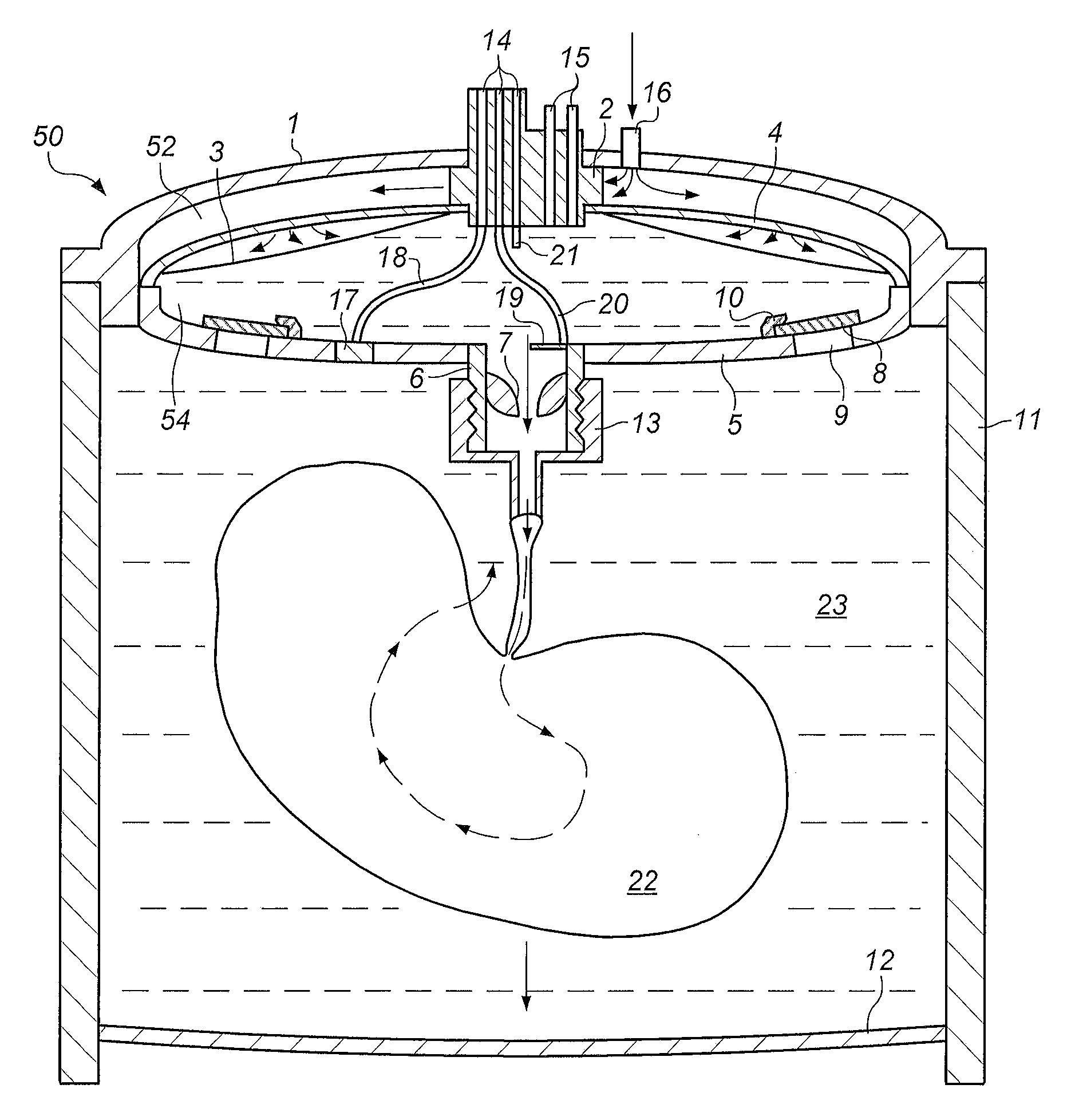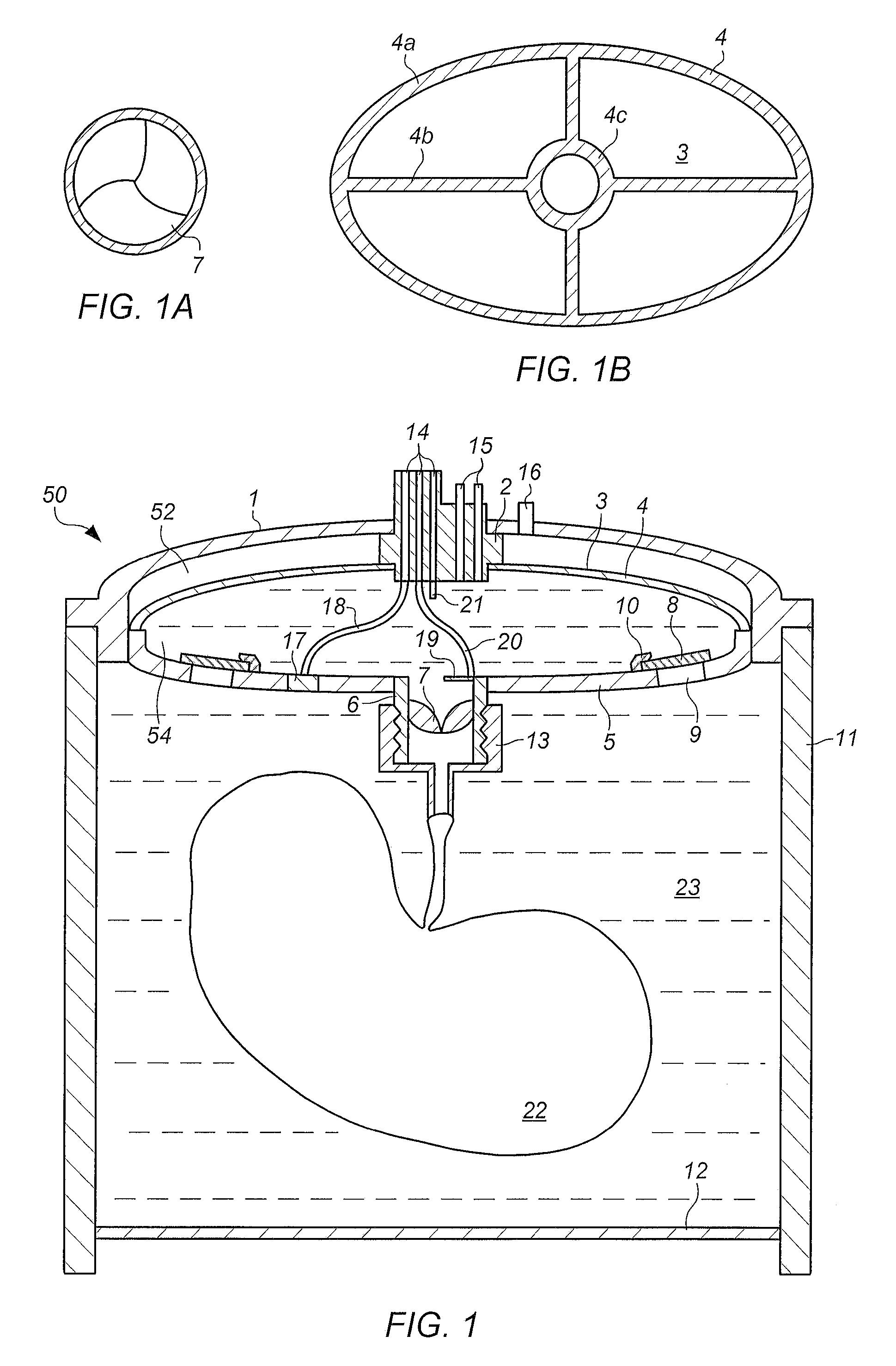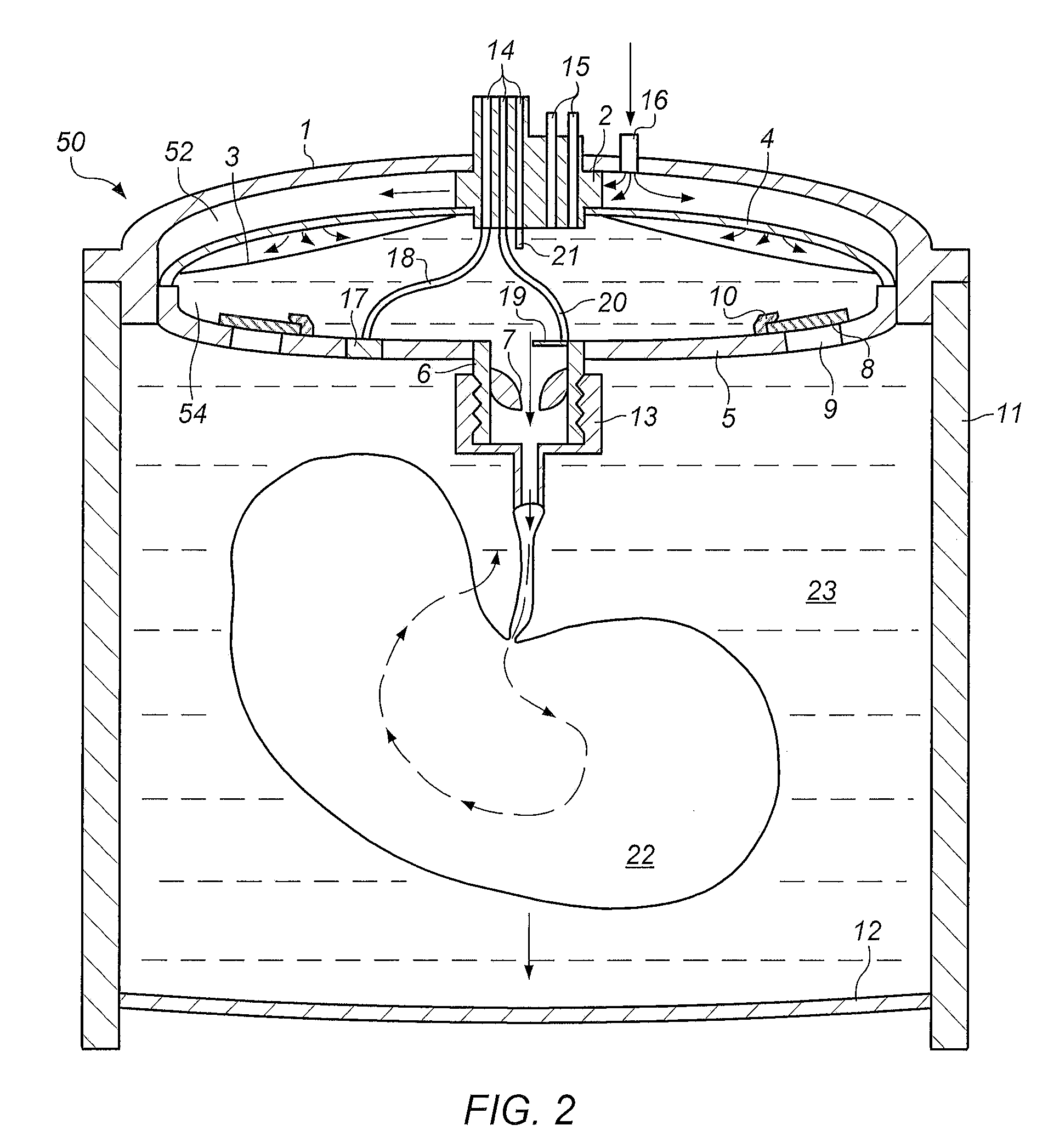Fluidics based pulsatile perfusion preservation device and method
a technology of tissue perfusion and fluidics, which is applied in the field of methods and apparatus for the preservation of living tissues, can solve the problems of limited success of tissue perfusion in the atmosphere, limited tissue viability, and the technique for tissue preservation has not become normalized
- Summary
- Abstract
- Description
- Claims
- Application Information
AI Technical Summary
Benefits of technology
Problems solved by technology
Method used
Image
Examples
Embodiment Construction
[0032]Turning now to the drawings, FIG. 1 is a cross-section view of an embodiment of a preservation apparatus for preserving extracorporeal living tissue and organs. The preservation apparatus includes a storage compartment 23 defined by walls 11 and bottom 12. Storage compartment 23 is capable of receiving living tissue and organs 22. The apparatus also includes a cover assembly 50 composed of a lid 1, a support element 5, and a gas permeable membrane 3 disposed between support element 5 and lid 1. When assembled cover assembly 50 together with storage compartment 23 define a storage chamber. Gas permeable membrane 3 in combination with lid 1 defines a pumping chamber 52. In combination with support element 5, gas permeable membrane 3 also defines a perfusion chamber 54.
[0033]An oxygen containing gas source is coupled to pumping chamber 52 of the apparatus through port 16. In use, the tissue or organ 22 is submerged in a preservation fluid in the storage compartment 23. The oxygen...
PUM
 Login to View More
Login to View More Abstract
Description
Claims
Application Information
 Login to View More
Login to View More - R&D
- Intellectual Property
- Life Sciences
- Materials
- Tech Scout
- Unparalleled Data Quality
- Higher Quality Content
- 60% Fewer Hallucinations
Browse by: Latest US Patents, China's latest patents, Technical Efficacy Thesaurus, Application Domain, Technology Topic, Popular Technical Reports.
© 2025 PatSnap. All rights reserved.Legal|Privacy policy|Modern Slavery Act Transparency Statement|Sitemap|About US| Contact US: help@patsnap.com



